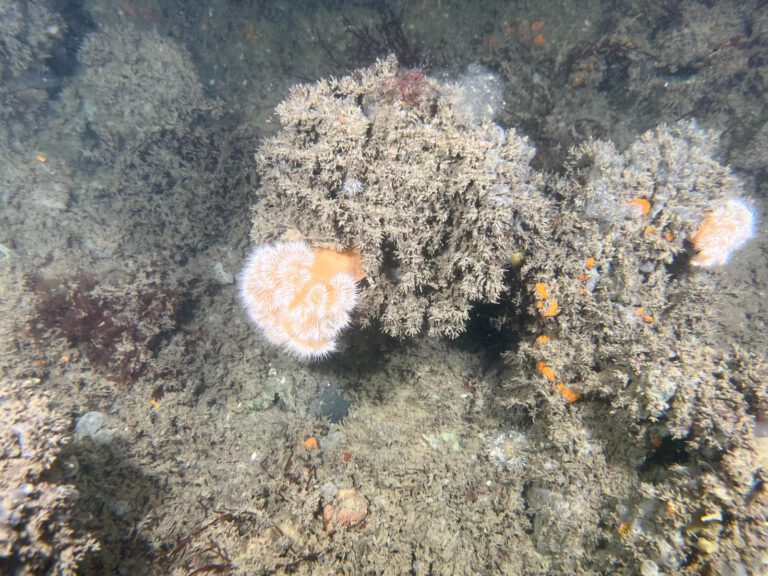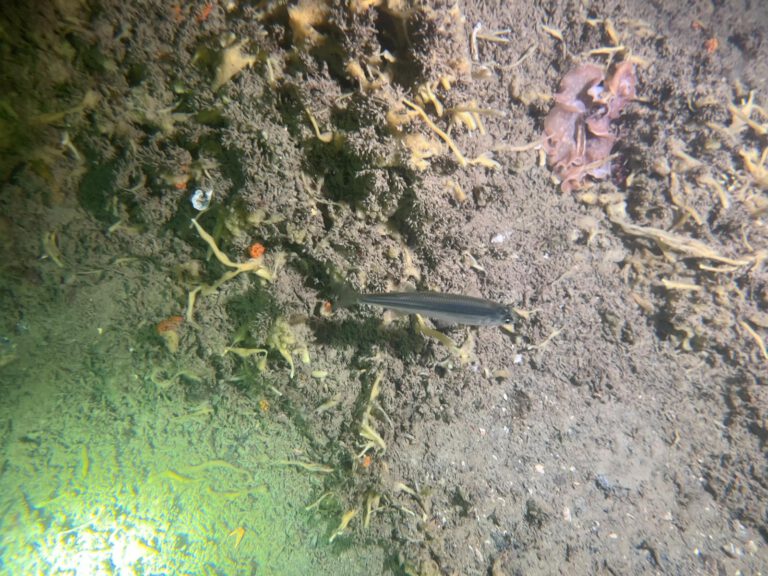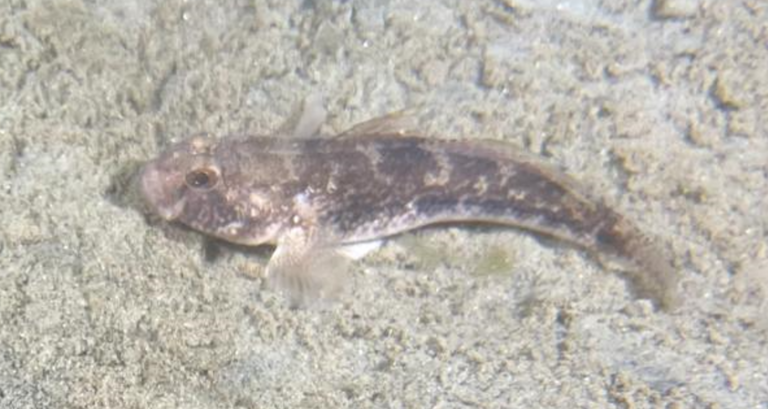Sea Urchin (Echinus esculentus)
Sea Urchin (Echinus esculentus) - Zeeappel

Taxonomy: The Sea Urchin belongs to the Echinodermata phylum. This group includes starfish and sea cucumbers. The name “Echinus” means “spiny” in Greek, which reflects their appearance.
Species: The common sea urchin, Echinus esculentus, is well-known for its round, spiny shell. It can grow up to 10 cm in diameter and is usually dark purple or black.
Reproduction: Sea urchins reproduce through external fertilization. During spawning, they release eggs and sperm into the water. This usually occurs in spring when water temperatures rise.
Habitat: Sea urchins are found in shallow coastal waters. They thrive in rocky substrates and kelp forests. You can spot them in tidal pools and under rocks.
Diet: They are herbivorous, primarily feeding on algae and kelp. Sea urchins use their unique mouth structure, called Aristotle’s lantern, to scrape food from surfaces.
Conservation: Sea urchins face threats from overfishing and habitat destruction. In some regions, they are considered pests due to their voracious appetite for kelp.
Unique Anatomy: Sea urchins have a hard shell covered in spines. These spines provide protection and help them move. They also have tube feet that help them cling to surfaces.
Color Change: While they don’t change color like some marine animals, their spines can appear different shades based on the environment and the presence of algae.
Lifespan: Sea urchins can live for several years, with some individuals reaching ages over 30 years in the right conditions.
Sea Urchins: The Spiny Protectors of the Sea
When you explore the ocean, you might notice vibrant coral reefs, graceful fish, and colorful sea stars. But lurking among the rocks, you may find the fascinating sea urchin. These spiny creatures play an important role in their underwater habitat.
What is a Sea Urchin?
Sea urchins are unique marine animals belonging to the Echinodermata phylum. Their round shape and numerous spines make them easily recognizable. They are primarily found in shallow waters, where they play a vital role in maintaining the health of marine ecosystems.
A Day in the Life of a Sea Urchin
Sea urchins are not strong swimmers. They rely on their spines and tube feet to navigate their environment. You can find them hiding under rocks or in crevices, munching on algae. Their feeding habits help control algal growth, promoting the health of kelp forests and coral reefs.
Reproduction: A Spawning Spectacle
During the warmer months, sea urchins engage in a remarkable spawning event. They release eggs and sperm into the water, allowing for external fertilization. This process creates new life and contributes to the diversity of marine ecosystems.
Ecological Role: Keepers of the Kelp Forests
Sea urchins play a crucial role in their habitats. By grazing on algae, they help maintain a balance in the ecosystem. However, when their populations grow unchecked, they can damage kelp forests, leading to ecological imbalance.
Conclusion
Sea urchins may be spiny and small, but they have a significant impact on marine environments. Their unique adaptations, fascinating life cycle, and ecological importance make them worthy of admiration and protection. Next time you dive or explore coastal waters, take a moment to appreciate these incredible creatures that play such an essential role in our oceans.







